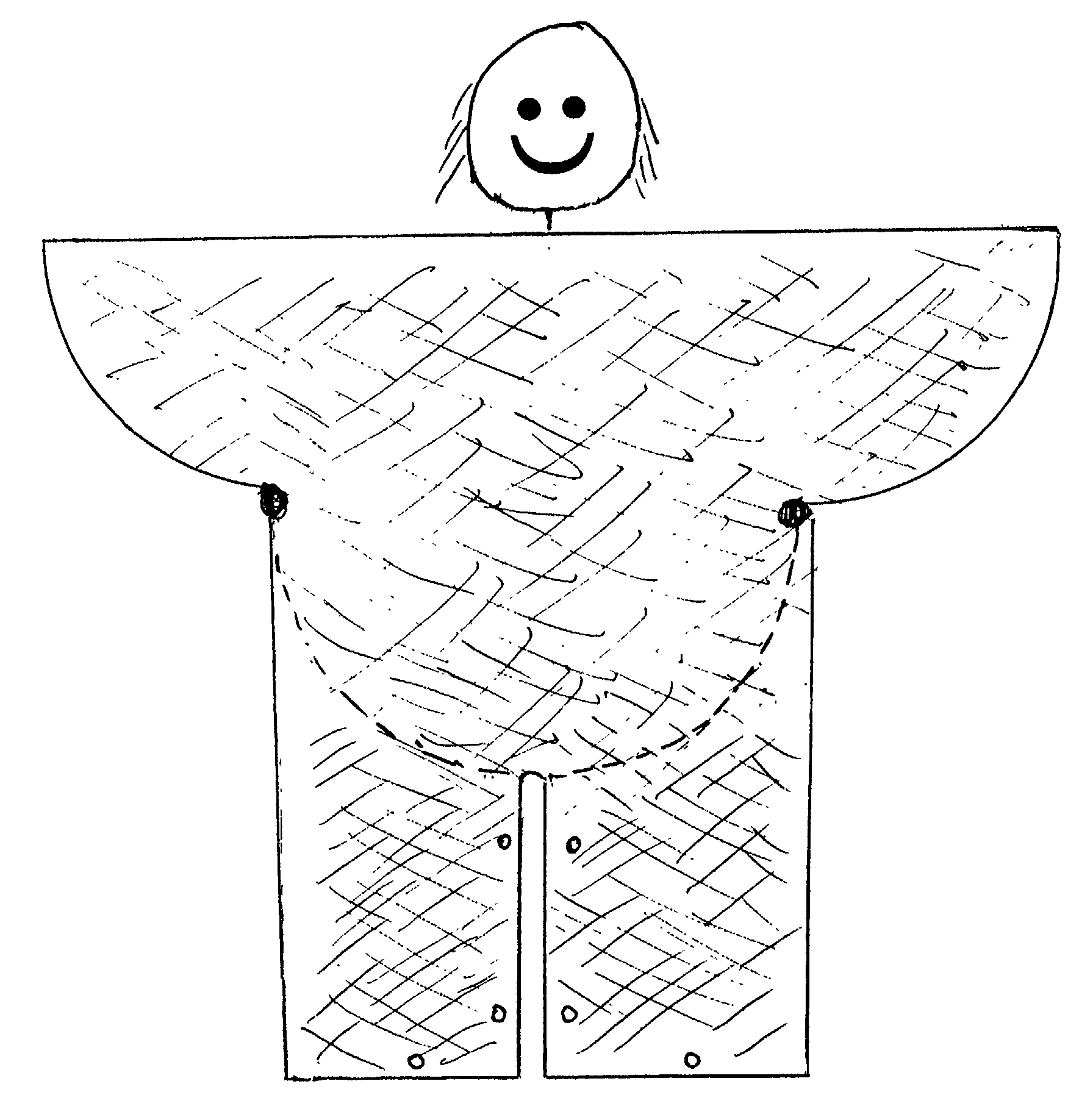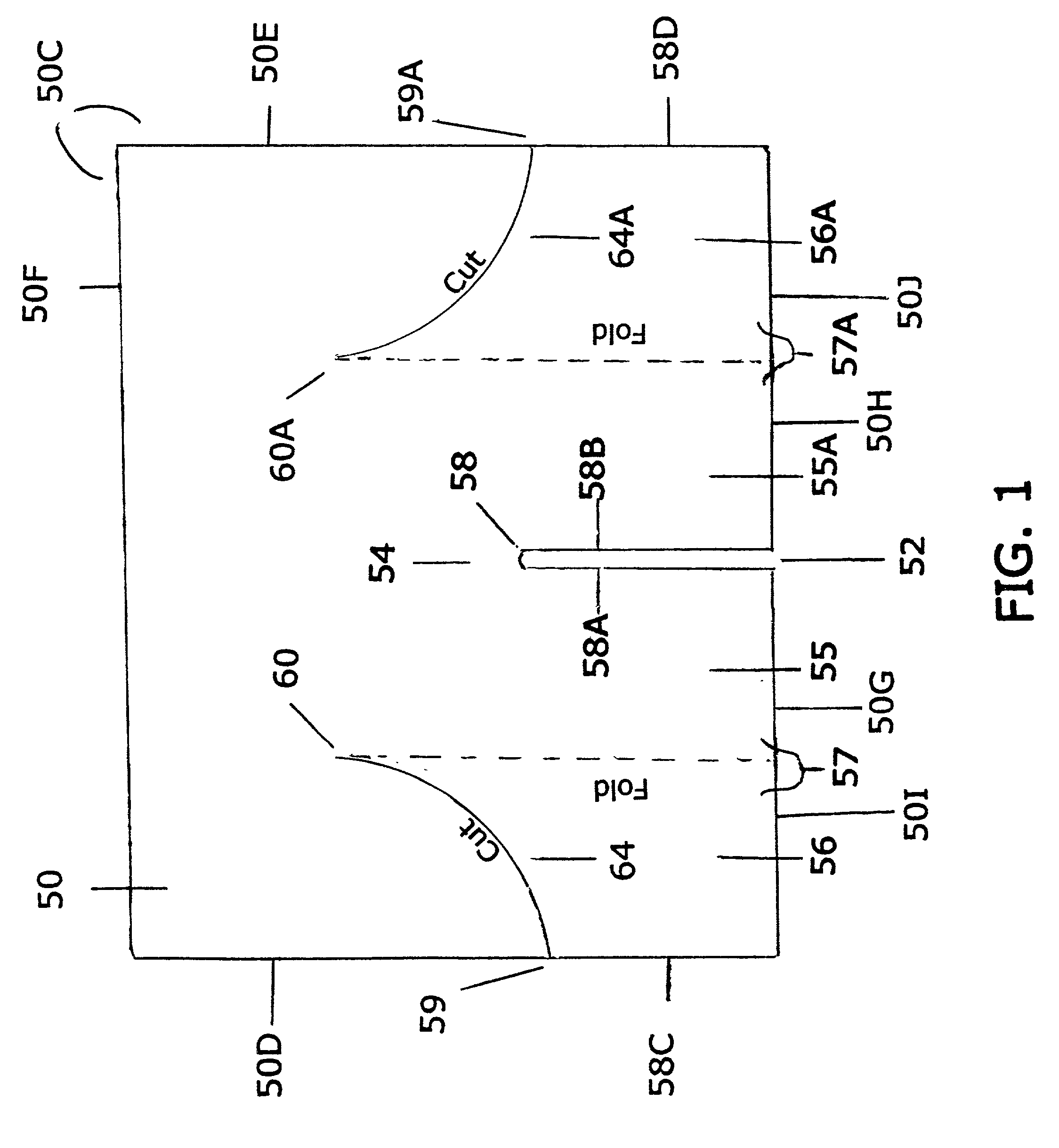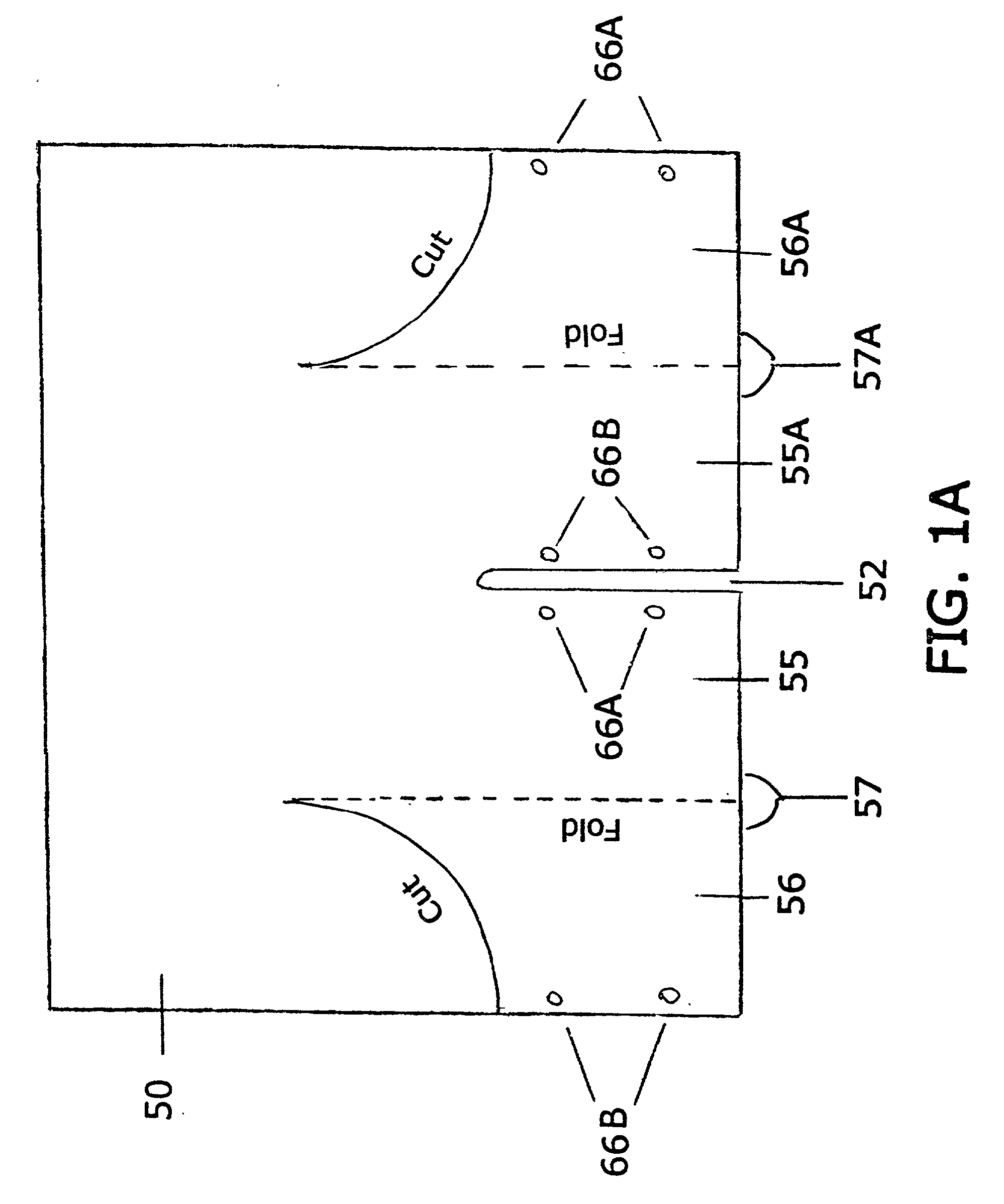Bifurcated wrap-around covering
a wrap-around cover and bifurcated technology, applied in the field of wrap-around covers, can solve the problems of difficult fitting, parts of the child to be uncovered, and ordinary flat blankets are not very effective for use on children
- Summary
- Abstract
- Description
- Claims
- Application Information
AI Technical Summary
Problems solved by technology
Method used
Image
Examples
first embodiment
[0256] FIGS. 4 and 5: Rear and front views, respectively of The covering blanket is to be applied onto a person with leg compartments 57 and 57A unfastened, straddling a crotch obstruction if there is one. The rear leg compartment panels 56 and 56A are to be drawn behind the legs and fastened, wherein inner segment 58A of left front leg compartment panel 55 is fastened to inner segment 58C of left rear leg compartment panel 56, and inner segment 58B of right front leg compartment panel 55A is fastened to inner segment 58D of right rear leg compartment panel 56A, and bottoms of leg compartments 57 and 57A at lower segments 50G, H, I and J are fastened if desired.
second embodiment
[0257] Second Embodiment
[0258] FIG. 6: For the second embodiment, a wrap, additional flexible material in the longitudinal dimension for the head 70 is added to the first embodiment, and additional flexible material in the width 72 and 72A is added to the first embodiment. The circular cuts forming the rear leg compartment panels 56 and 56A are the same as in the first embodiment, starting at the same distance from the apex 58 as in the first embodiment. In the first embodiment inner segments 58C and 58D of the rear leg compartment panels 56 and 56A, were already existing as they were the edges of the flexible material 50. In this second embodiment, there is extra material 72 and 72A on the sides of areas known as inner segments 58C and 58D of the first embodiment, causing inner segments 58C and 58D to not be established. Inner segments 58C and 58D must be established. This is done by measuring from the aperture 52 along lower segment and outwardly to the left a distance half the de...
third embodiment
[0262] Third Embodiment
[0263] FIG. 14: The third embodiment is similar to the second embodiment. The difference is that only a small piece of the additional material in the width 72 and 72A is removed instead of the entire lower section as in the second embodiment. The remaining material 72 and 72A that is not cut away are triangular pieces that will attach to the outside edges of the closed leg compartments, called wings 74 and 74A. To cut the material 72 and 72A properly to create the wings, start cutting from the outside bottom edge corners upward diagonally to the 180 degrees marks 59 and 59A which are the same points at which the circular cuts were started earlier.
[0264] FIG. 15: Gather and affix the circularly cut bottom edge of the upper sections in the same manner as in the first embodiment. Then place the diagonally cut edges, wings 74 and 74A against the outside edges 50K and 50L of the closed leg compartments 57 and 57A respectively and sew.
[0265] FIGS. 16 and 17: The bla...
PUM
 Login to View More
Login to View More Abstract
Description
Claims
Application Information
 Login to View More
Login to View More - R&D
- Intellectual Property
- Life Sciences
- Materials
- Tech Scout
- Unparalleled Data Quality
- Higher Quality Content
- 60% Fewer Hallucinations
Browse by: Latest US Patents, China's latest patents, Technical Efficacy Thesaurus, Application Domain, Technology Topic, Popular Technical Reports.
© 2025 PatSnap. All rights reserved.Legal|Privacy policy|Modern Slavery Act Transparency Statement|Sitemap|About US| Contact US: help@patsnap.com



